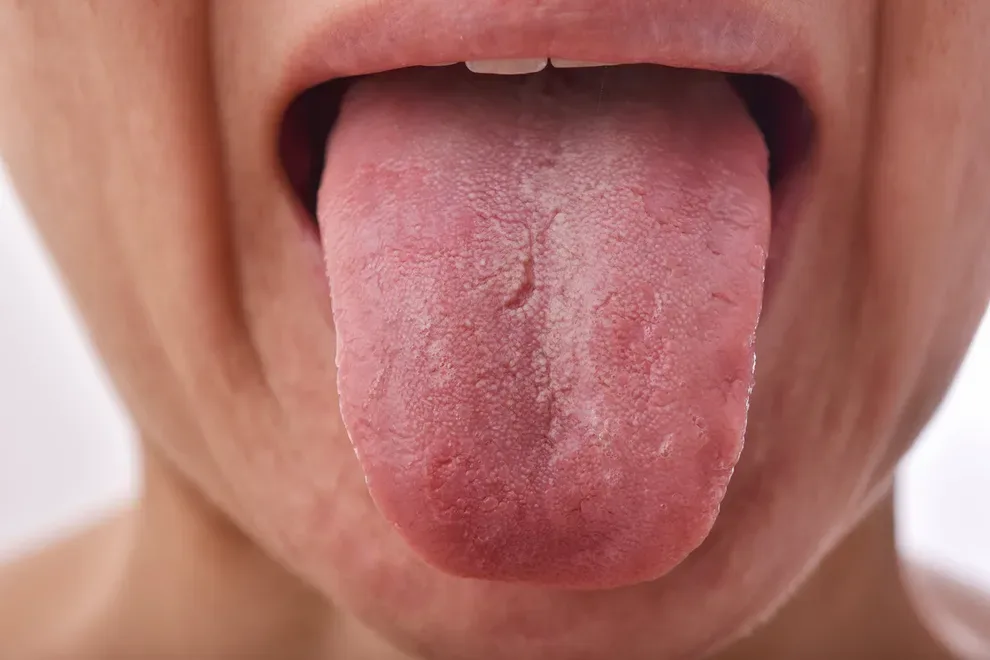Enlarged Tongue or Macroglossia: Causes, Diagnosis & Treatment

Table of Contents
- What Is an Enlarged Tongue?
- Causes
- Signs & Symptoms
- Diagnosis
- Treatment Options
- Living With Macroglossia
Macroglossia is an abnormally enlarged tongue. It is a rare condition generally caused by another disorder, such as Beckwith-Wiedemann syndrome. It can also be genetic and inherited.
An enlarged tongue can cause speech and feeding difficulties. It can also cause airway obstruction and disrupted growth of the mouth and jaw.
Treatment for macroglossia often depends on the underlying cause of the enlargement of the tongue. It can range from speech therapy for mild cases to surgical interventions for more severe cases. As macroglossia is most commonly a secondary condition, treatment is most effective when the underlying condition is managed first.
What Is an Enlarged Tongue?
When the tongue is abnormally enlarged, it is called macroglossia. It most often occurs as a secondary condition that is either congenital (present at birth) or acquired (caused by something else like a trauma).
Macroglossia is a rare condition that can also occur on its own as a congenital condition with no other underlying condition, although this is less likely.
Most often, the condition is caused by increased tissue growth on the tongue. This abnormal tissue growth is frequently related to an underlying condition.1
With macroglossia, the tongue is too big for the mouth and is proportionally too large.
Macroglossia Causes
Macroglossia can occur on its own as an inherited autosomal dominant trait, but it is much more commonly a secondary condition related to another underlying condition. It is most often the result of muscular hypertrophy, which is when muscle mass increases, or vascular malformations, which are the result of blood vessel abnormalities.2
Macroglossia is most commonly a secondary condition to congenital disorders, such as Beckwith-Wiedemann syndrome. This issue impacts as many as 90 percent of children with this disorder.3
Macroglossia can also be related to following congenital conditions:
Down syndrome
Congenital hypothyroidism
Acromegaly
Diabetes
Primary amyloidosis
Lymphangioma
Mucopolysaccharidoses
Neurofibromatosis
Acquired causes of macroglossia can include the following:
Trauma
Inflammatory or infectious diseases
Hypothyroidism
Metabolic or endocrine conditions
Malignancy
Signs & Symptoms
The most common sign of macroglossia is a disproportionately large tongue. This type of enlarged tongue will often not fit in the mouth and can stick out.
Symptoms of an enlarged tongue can include the following:
Snoring
Noisy, high-pitched breathing
Feeding difficulties in infants
Ulceration or dying tissue on the tip of the tongue
Speech issues in children
Abnormal development of the teeth and jaw, which can lead to protruding or misaligned teeth
Drooling
Swallowing difficulties
Chronic and recurrent upper respiratory infections
Diagnosis of Macroglossia
In order to best treat macroglossia, the underlying condition should be discovered and managed. Medical professionals will need to study the patient’s history and do a thorough physical exam that will often include laboratory tests and possible imaging. If macroglossia is due to abnormal growths or tumors, a biopsy may also be necessary.
Since an enlarged tongue is often a secondary condition and not an isolated one, the tongue can often be reduced in size by treating the underlying condition.
Often, a number of medical professionals in a variety of fields work together to find the root of the issue.
Treatment Options for an Enlarged Tongue
Most of the time, macroglossia can be managed with conservative treatments. Only about 10 percent of patients require a surgical intervention.
Typically, the standard of care is to take the most conservative approach that can help preserve the function of the tongue. If the enlarged tongue is blocking the airway or causing significant feeding and speech issues, it may need to be surgically reduced.
When surgery is needed, the tongue is surgically reduced in size. The mouth may need to be remodeled, and orthodontic procedures can help to restructure the teeth and bite.
The majority of the time, a partial glossectomy is the preferred surgical option. This means removing as little as possible to keep the function of the tongue while improving other issues. Surgery can improve physical appearance, chewing and feeding, as well as speech.
Treatments for macroglossia can include the following:
Surgery
Radiotherapy
Psychotherapy
Medications
Orthodontic treatment
Your doctor will need to first determine if macroglossia is related to another condition and then work to manage that issue. Once that issue is managed, your doctor may treat your enlarged tongue directly.
Living With Macroglossia
Treatment for an enlarged tongue depends on the other conditions causing it or that are present at the same time. For example, controlling an infection that is causing macroglossia with medications can reduce the size and swelling of the tongue. Similarly, if macroglossia is due to hypothyroidism, the tongue can also be reduced in size by managing this condition.
A complete medical team can help to support and manage the condition. In infants, feeding and lactation specialists can aid with feeding difficulties to ensure proper nutrition and weight gain. Older children can often benefit from speech therapy.
An enlarged tongue can result in poor self-image and psychological issues that can benefit from the help and support of a psychologist.
Treatment and management of an enlarged tongue requires a multidisciplinary approach with a team of medical professionals working together to determine the cause and best path forward for handling macroglossia.
